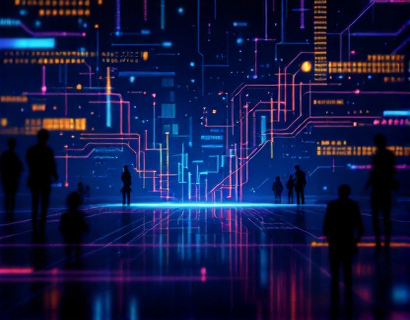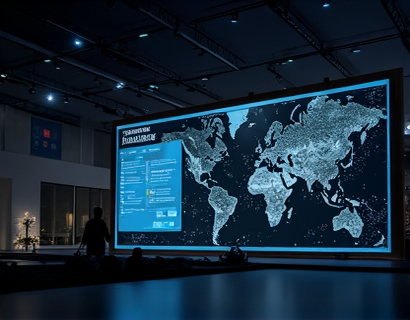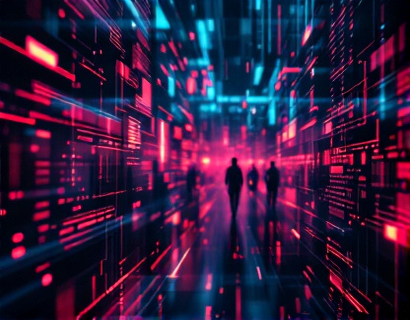Next-Gen QR Code Technology: Elevating Business and Social Media Engagement for Modern Enterprises
In the rapidly evolving digital landscape, businesses and social media managers are constantly seeking innovative solutions to enhance engagement and streamline interactions with their audience. One such technology that has emerged as a game-changer is next-generation QR code technology. This advanced form of QR codes is not just an improvement over the traditional version but a complete reimagining designed to meet the demands of modern digital engagement. These next-gen QR codes offer customizable and intuitive tools that significantly enhance information sharing and boost customer interaction, making them essential for brands looking to elevate their digital presence and foster deeper connections with their audience.
The evolution of QR codes from simple black and white squares to sophisticated, multi-functional tools reflects the broader trends in digital technology. Traditional QR codes have been widely used for tasks such as product information, coupon redemption, and website linking. However, they often fall short in terms of user experience and functionality. Next-gen QR codes address these limitations by incorporating advanced features that cater to the complex needs of today's consumers and businesses. These codes can store and deliver a wealth of information, interact with various platforms, and provide a seamless user experience, all while maintaining the simplicity and accessibility that QR codes are known for.
Enhanced Information Storage and Delivery
One of the most significant advancements in next-gen QR codes is their increased capacity for information storage. Unlike traditional QR codes, which are limited to a few hundred characters, next-gen versions can hold thousands of characters of data. This expanded capacity allows businesses to include detailed product descriptions, comprehensive service information, and even multimedia content such as videos and audio clips. For instance, a retail brand can embed a next-gen QR code on a product label that, when scanned, not only provides basic product details but also offers a 360-degree view of the product, customer reviews, and a detailed care guide.
Moreover, the ability to store and deliver dynamic content is a game-changer. Next-gen QR codes can link to URLs that change over time, allowing businesses to update information without needing to create new QR codes. This feature is particularly useful for campaigns that require regular updates, such as flash sales or limited-time offers. For example, an e-commerce platform can use next-gen QR codes to direct customers to a landing page with special discounts that refresh daily, ensuring that the offer remains fresh and compelling.
Multi-Platform Integration
Another key advantage of next-gen QR codes is their seamless integration across various platforms. These codes can be easily embedded into websites, social media posts, print materials, and even physical products. This versatility ensures that businesses can maintain a consistent and cohesive engagement strategy across all touchpoints. For instance, a company can place next-gen QR codes on its website for easy access to customer support resources, on product packaging for detailed usage instructions, and on marketing materials to drive traffic to a specific campaign page.
Social media platforms, in particular, benefit from the integration of next-gen QR codes. Brands can create QR codes that link directly to their social media profiles, allowing users to follow or engage with the brand instantly. This streamlined process enhances user experience and increases the likelihood of new followers and interactions. Additionally, next-gen QR codes can be used to create interactive stories or polls on platforms like Instagram and Facebook, providing a more engaging and interactive content format.
User-Friendly Design and Customization
The design and customization options available with next-gen QR codes make them highly adaptable to brand identities and specific use cases. Unlike traditional QR codes, which have a standardized appearance, next-gen versions can be customized in terms of size, shape, color, and even pattern. This flexibility allows businesses to integrate QR codes seamlessly into their branding and marketing materials without compromising aesthetics. For example, a luxury brand can design QR codes that match their logo and color scheme, ensuring a cohesive and high-end look.
Customization extends beyond visual aspects to functional features. Businesses can set up QR codes to perform specific actions based on user interactions. For instance, a QR code can be programmed to direct users to a landing page with a personalized message based on their previous interactions or to trigger a specific app function, such as opening a map or starting a video. This level of customization enhances the user experience by providing relevant and timely information, thereby increasing engagement and satisfaction.
Enhanced Security and Trust
Security is a critical concern in the digital age, and next-gen QR codes address this by incorporating advanced security features. These codes can include encrypted data, ensuring that sensitive information remains protected during transmission. This is particularly important for businesses handling confidential data or conducting transactions. For example, a financial institution can use next-gen QR codes to link to secure login pages or transaction confirmations, providing an additional layer of security for customers.
Moreover, the use of next-gen QR codes can enhance trust between businesses and their audience. By providing transparent and verifiable information, these codes help build credibility. For instance, a food brand can use QR codes to link to detailed ingredient sourcing and production processes, allowing consumers to verify the authenticity and quality of the products. This transparency not only builds trust but also aligns with the growing consumer demand for ethical and sustainable practices.
Data Analytics and Insights
Next-gen QR codes offer valuable data analytics and insights that can significantly benefit businesses. By tracking scans and user interactions, businesses can gain insights into customer behavior, preferences, and engagement patterns. This data can be used to optimize marketing strategies, improve product offerings, and enhance overall customer experience. For example, a retail brand can analyze QR code scan data to identify which products are generating the most interest and adjust their inventory and marketing efforts accordingly.
Furthermore, the integration of QR codes with analytics tools allows for real-time monitoring and reporting. Businesses can receive instant feedback on the performance of their QR code campaigns, enabling them to make data-driven decisions quickly. This capability is especially valuable for time-sensitive campaigns or limited-time offers, where timely adjustments can make a significant difference in success.
Environmental Sustainability
In an era where environmental consciousness is increasingly important, next-gen QR codes contribute to sustainability efforts. Unlike traditional marketing materials that often end up as waste, QR codes can be printed on a variety of surfaces, including reusable or biodegradable materials. This reduces the environmental impact of marketing efforts and aligns with the growing trend of eco-friendly practices. For instance, a fashion brand can use QR codes printed on reusable stickers that customers can apply to their clothing, providing information without the need for additional paper materials.
Additionally, the digital nature of next-gen QR codes means that they eliminate the need for physical coupons, brochures, and other printed materials. This shift not only reduces paper usage but also streamlines the distribution process, making it more efficient and cost-effective for businesses.
Case Studies and Real-World Applications
To better understand the impact of next-gen QR code technology, let's explore some real-world applications across different industries.
In the retail sector, a major clothing brand implemented next-gen QR codes on its product tags. When scanned, these codes not only provided detailed product information and care instructions but also directed customers to a virtual try-on feature, enhancing the shopping experience and reducing return rates. The brand reported a 30% increase in customer engagement and a 20% reduction in returns within the first six months of implementation.
In the hospitality industry, a luxury hotel chain used next-gen QR codes on room keys and amenity cards. These codes linked to personalized guest profiles, offering tailored recommendations for local attractions, dining options, and spa services. This personalized touch not only improved guest satisfaction but also increased the likelihood of repeat visits and positive word-of-mouth recommendations.
In the non-profit sector, a charity organization utilized next-gen QR codes on donation cards and event materials. The codes directed donors to a page where they could see the impact of their contributions in real-time, including videos and testimonials from beneficiaries. This transparency and immediacy led to a 40% increase in donations during a major fundraising campaign.
Future Trends and Innovations
As technology continues to evolve, the potential for next-gen QR codes is vast. One exciting trend is the integration of augmented reality (AR) capabilities. Next-gen QR codes can trigger AR experiences that overlay digital information onto the physical world, providing immersive and interactive content. For example, a travel company can create a QR code that, when scanned, brings a 3D model of a destination to life, showcasing key attractions and experiences.
Another area of innovation is the incorporation of blockchain technology. Next-gen QR codes can be linked to blockchain records, ensuring the authenticity and traceability of products. This is particularly relevant for industries like luxury goods and pharmaceuticals, where counterfeit products are a significant concern. By using QR codes connected to blockchain, businesses can provide consumers with verifiable proof of authenticity, enhancing trust and loyalty.
Additionally, the development of smart QR codes that can interact with IoT devices is on the horizon. These codes can trigger actions in smart homes, such as adjusting lighting or temperature settings, or initiate processes in industrial settings, like starting a machine or monitoring inventory levels. This level of integration promises to revolutionize how businesses operate and interact with their environment.
Conclusion
Next-gen QR code technology represents a significant leap forward in digital engagement for modern enterprises. By offering enhanced information storage, multi-platform integration, user-friendly design, advanced security, data analytics, and environmental sustainability, these codes provide a comprehensive solution for businesses looking to enhance their digital presence and customer interactions. As the technology continues to evolve, the potential applications and benefits will only grow, making next-gen QR codes an essential tool for any forward-thinking brand.









































